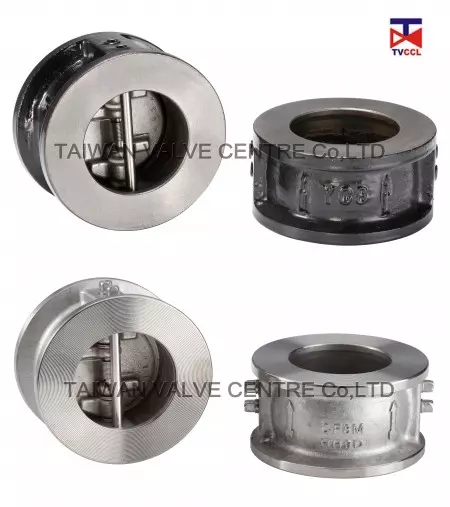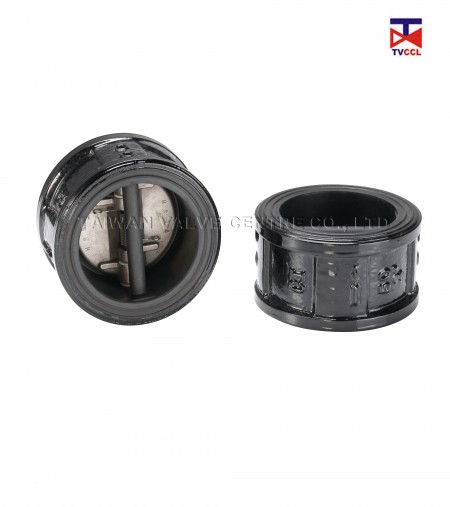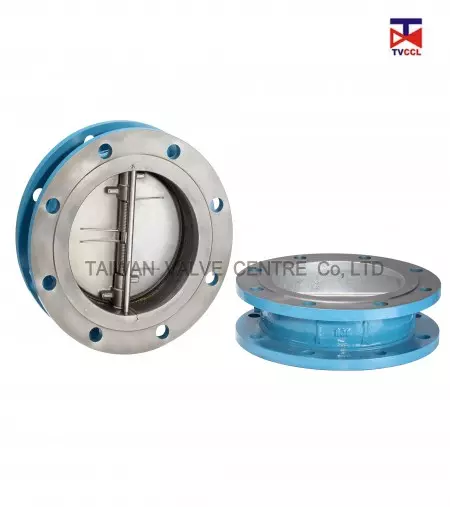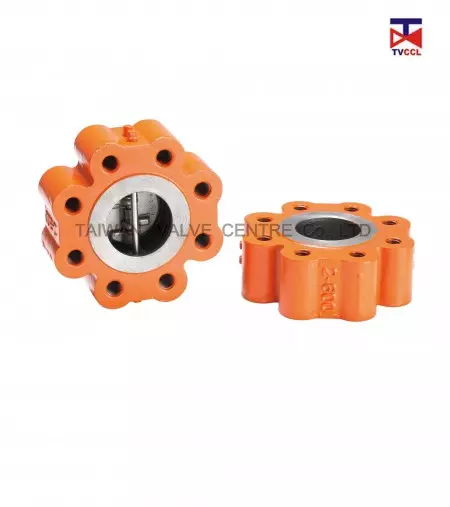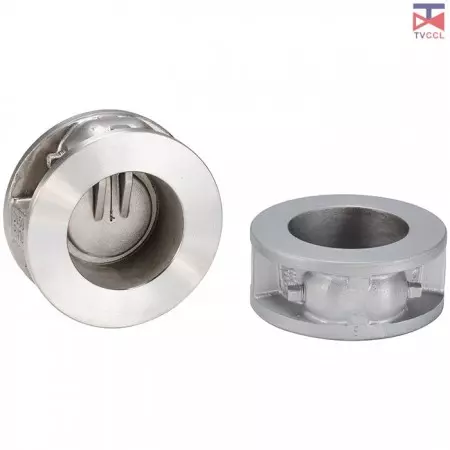Duo Disc Check valve for Air and Air Blower
What are the causes of damage to the Duo Disc check valve for air and blowers?
Dual plate wafer check valves are also used in air and air blast systems. Although the medium is different from water, many of the operating principles remain the same. However, the causes of damage may be slightly different due to the gaseous nature of air.
Let's look at the reasons for damage to the dual plate wafer type check valve in air and air blast systems, followed by solutions to mitigate these problems.
Causes of damage:
- Rapid Pressure Fluctuations: Sudden changes in air pressure can cause the dual plate wafer type check valve to open and close rapidly, causing mechanical stress and possible damage.
- Vibration: High-speed air blowers can produce significant vibrations. If the duo check valve isn't adequately supported, these vibrations can lead to wear and potential failure.
- Foreign Objects: Debris or foreign objects in the air system can become lodged in the valve, preventing it from closing properly or causing damage.
- Incorrect Installation: Misalignment during installation can cause uneven wear or prevent the valve from functioning properly.
- Backflow: If the check valve doesn't close properly, it can allow backflow, leading to operational problems and potential damage.
- Temperature Fluctuations: Extreme temperature changes, especially in systems where air is heated or cooled, can cause thermal expansion and contraction, resulting in stress in the valve material.
- Corrosion: While air is generally non-corrosive, the presence of moisture, especially in compressed air systems, can lead to corrosion.
- Incorrect Sizing: If the check valve isn't correctly sized for the flow rates and pressures in the system, it can lead to inefficient operation and potential damage.
- Lack of Maintenance: Regular inspection and maintenance are critical. Dust, dirt, and other particles can accumulate and affect valve operation if not cleaned and maintained on a regular basis.
- Material Incompatibility: Materials used for seals and other valve components should be compatible with the temperature and any additives or contaminants in the air. Incompatibility may result in premature wear or failure.
- Cavitation: While more common in liquid systems, cavitation can also occur in gas systems, especially if there's a rapid pressure drop. The collapse of these cavities can cause damage to the valve.
Solutions:
- Material Selection: Select materials that will resist corrosion, especially if moisture is present in the air system.
- Vibration Dampeners: Install vibration dampeners or isolators to reduce the effect of vibration from the air blower on the check valve.
- Regular Maintenance: Periodically inspect and clean the dual plate check valve to remove debris and ensure proper functioning.
- Proper Installation: Make sure the double door check valve is correctly aligned and installed according to the manufacturer's instructions. Use proper gaskets and fasteners.
- Flow Control: Use flow control devices or regulators to ensure flow rates remain within the valve's design specifications.
- Install Strainers: Installing strainers or filters upstream of the valve can help filter out debris and particulates to prevent them from reaching the valve.
- Temperature Control: If temperature fluctuations are a concern, consider using insulation or other temperature control measures.
- Desiccant Air Dryers: Use desiccant air dryers in compressed air systems to remove moisture and prevent corrosion.
- Regular Inspections: Conduct periodic inspections to identify and address issues before they lead to significant damage.
- Training: Ensure personnel are trained in the proper operation and maintenance of the valve to prevent misuse.
To ensure the longevity and proper functioning of dual plate wafer check valves in air and blower systems, it's important to select the right valve, ensure proper installation, and perform regular maintenance and inspections. Proper system design, including the use of filters and moisture separators, can also help prevent damage.
By proactively addressing these issues and implementing the suggested solutions, the longevity and functionality of dual plate wafer check valves in air and air blast systems can be ensured.
- Related Products
Dual Plate Wafer Type Check Valve
TC0
Fast Delivery: Most orders are shipped within 3-7 days, depending on stock availability. Versatile Applications: Suitable for a wide range of industries...
DetailsDual Plate Wafer Type Check Valve with Full Rubber
TC1
Dual plate wafer type check valve with full rubber is usually used in seawater desalination system. Usually we chose iron body and aluminum bronze disc...
DetailsDual Plate Flange Type Check Valve
TC4
Because the check valve flange type doesn’t tapping on the flange hole, installation of double door flange type check valve is simpler than double door...
DetailsDual Plate Lug Type Check Valve
TC6
The dual plate lug type check valve only takes 15-20 minute completely dissemble and reassemble or less. In general, the flange holes of dual plate lug type...
DetailsDual Plate Full Lug Type Check Valve
TC9
Double disc lug type check valves are designed to ASME, JIS, ISO, AWWA...etc. specifications and conform to API 594. Double disc lug type check valves...
DetailsSingle Door Wafer Type Check Valve with Short Type
TS-1
TVCCL's single door check valve offers numerous advantages customized for modern industrial requirements. Its compact design facilitates effortless integration...
DetailsSingle Door Wafer Type Check Valve With Long Type
TS-2
Single-plate wafer check valves are also called swing type that performs the same with swing check valve with much less cost. The Long type Single plate...
Details

